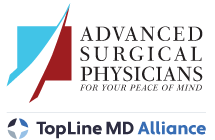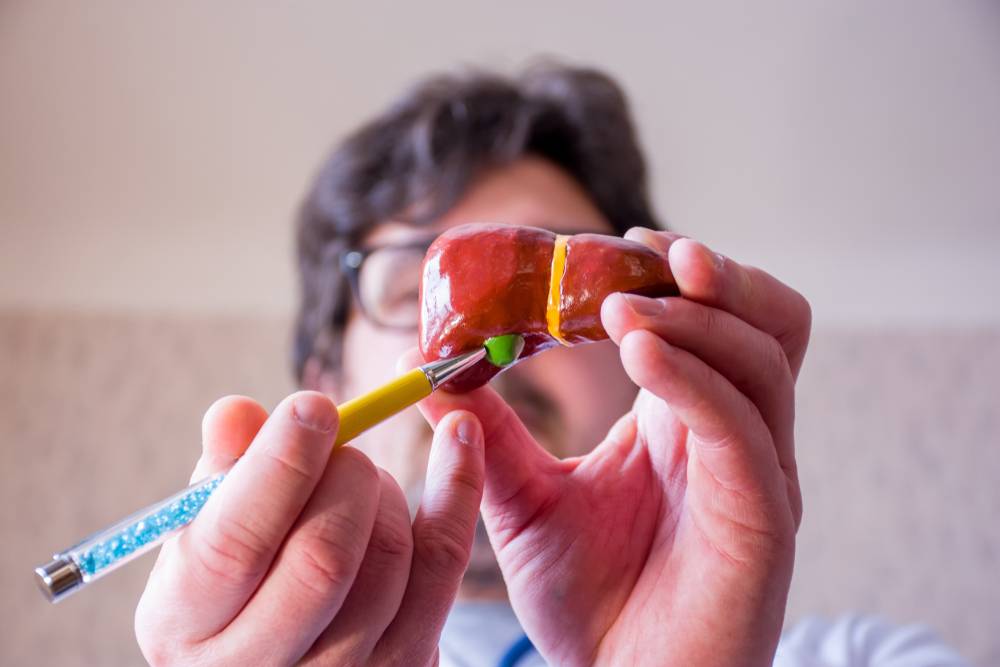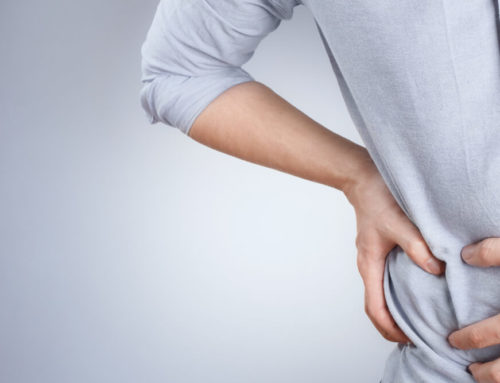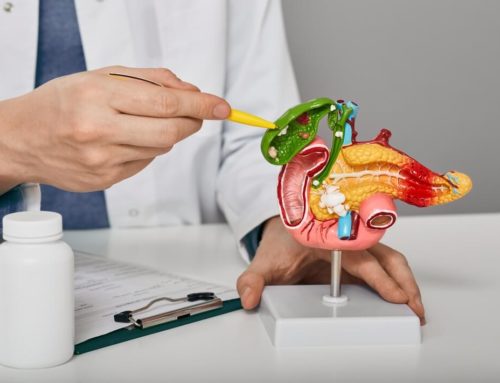Hidden beneath your liver, resides one of your body’s smaller organs, the gallbladder. Although no larger than a pear, it plays an integral role within your digestive system, collecting and storing bile, a fluid produced by your liver to help break down fats into fatty acids. When working in harmony, this vital organ supports the smooth operation of your digestive system.
Gallbladder diseases, symptomatic of a dysfunctioning gallbladder, vary from chronic inflammation, known as cholecystitis, to more serious conditions like gallbladder cancer. Understanding early symptoms like acute gallbladder pain or biliary dyskinesia’s indications can help prevent more severe conditions and lead to early treatment. Services of gallbladder surgery in Wellington, FL are various, but choosing the most suitable one is key for faster recovery.
By recognizing the key signs, you can take prompt action, which may involve gallbladder surgery in severe cases. By choosing to contact Advanced Surgical Physicians, amongst other medical centers, you can prevent a myriad of problems which can arise when your gallbladder does not function as it should.
Common gallbladder-related issues include gallstone formation, gallbladder disease, and bile duct obstruction. Problems often manifest as indigestible gallstones, the most common issue associated with gallbladder health. In many scenarios, these obstructions require surgical intervention through Cholecystectomy, a procedure involving the gallbladder’s removal.
As we delve deeper into understanding the gallbladder’s functions, dysfunctions, and signs that your gallbladder may need to be removed, it is crucial to remember that any concerns regarding your health should be promptly addressed with a medical professional. Stay informed, but let your doctor guide your health decisions.
Detailed Explanation of Symptomatic Gallstones
Description of Gallstones, Their Formation, and Linked Symptoms
Gallstones are small, hard deposits that form in the gallbladder. The creation of these stones can be attributed to numerous factors, including an excess of cholesterol in the bile or an overabundance of bilirubin, a chemical formed as a byproduct of the liver breaking down red blood cells. Additionally, abnormal gallbladder function such as failing to empty the bile regularly can lead to gallstone formation.
These stones can range from being as small as sand grains to as large as golf balls. Gallstone pain indicators are not always evident for every individual as the presence of gallstones does not necessarily correlate with symptoms. However, when a gallstone lodges in a bile duct and causes a blockage, the resultant gallbladder attack signs can be noticeable and severe.
Identifying gallbladder problems can be difficult without a clear understanding of the symptoms. Typical gallbladder issues symptoms include sudden and rapidly intensifying pain in the upper right portion of your abdomen, pain in the center of your abdomen, just below the breastbone, and back pain between your shoulder blades. These gallbladder pain symptoms are often accompanied by nausea or vomiting.
Emphasizing the Correlation Between Gallstones and Escalating Issues if Left Untreated
Gallstones, if left untreated, can lead to escalated health concerns. When the gallstones block the bile ducts, bile builds up in the gallbladder, causing an inflammation called cholecystitis. Acute cholecystitis signs include fever, chills, and severe abdominal pain, which may require immediate medical intervention.
In certain circumstances, the blockage from gallstones can also lead to bile duct infections, or worse, a life-threatening infection of the gallbladder. If gallstones block the passage of the liver or pancreas, conditions like hepatitis or pancreatitis may occur, contributing to severe gallstone symptoms. Prompt treatment, which often involves surgery to remove the gallbladder, is crucial in complicated gallstone scenarios.
Chronic conditions may also develop if gallstones are not treated, leading to chronic gallbladder disease or gallbladder cancer in extreme cases. Expert guidance is critical for diagnosing gallbladder disorders and settling on the ideal course of action. A careful examination of symptoms and consideration of medical history form the basis for devising a strategic treatment plan.
Acute Cholecystitis and its Signs
Discussion on Acute Cholecystitis, its Development, and its Signs
Acute cholecystitis is a common gallbladder ailment characterized by the inflammation of the gallbladder. Typically, this condition emerges when gallstones obstruct the tiny outlet through which bile exits the gallbladder. This obstruction results in a buildup of bile causing the gallbladder to swell, leading to acute inflammation. However, it’s worth noting that acute cholecystitis might also arise due to severe illness, tumors, or various infections.
Recognizing the signs associated with this condition is of paramount importance. The most conspicuous acute cholecystitis signs are sudden-onset, severe pain in the upper right part of the abdomen that rapidly escalates. This pain often stretches towards the right shoulder or back region. Additionally, symptoms may include fever, a high pulse rate, significant tenderness in the upper abdomen when touched, and nausea or vomiting.
Diagnosing gallbladder disorders like acute cholecystitis often involves physical examination, patient history, and a battery of tests such as blood tests, ultrasound, or a HIDA scan, which evaluates gallbladder function.
Real-life Examples or Case Histories to Illustrate the Condition and Reinforce its Seriousness
To underscore the severity of acute cholecystitis, consider the case of a middle-aged woman complaining of persistent, severe pain in the right upper quadrant of her abdomen, radiating to the back. Upon physical examination, the woman exhibited signs of Murphy’s sign, a hallmark clinical cue indicating gallbladder inflammation.
Accompanied by a fever, escalated pulse rate, and severe tenderness in her upper abdomen, her symptoms mirrored typical acute cholecystitis signs. Within hours of her emergency room visit, she underwent a successful cholecystectomy to alleviate her painful symptoms.
This case amplifies the seriousness of acute cholecystitis, where ignoring gallbladder disease indicators can snowball into significantly more significant health problems. It serves as a critical reminder to not dismiss or downgrade gallbladder pain symptoms, escalating those concerns immediately to a healthcare professional to avoid grave complications.
This narrative aims to spread awareness about gallbladder-related issues, emphasizing the criticality of identifying gallbladder problems early on to ensure prompt treatment. By focusing on the early warning signs, individuals could save themselves from agony, and in some instances, emergency surgery and long-term health implications.
Biliary Dyskinesia – A Silent Scourge
Introduction to Biliary Dyskinesia, its Presentation Without Stones, and its Common Symptoms
The gallbladder plays a dynamic role in our body, acting as a reservoir for bile until it’s needed for digestion. Biliary dyskinesia is a gallbladder disorder characterized by the gallbladder’s inability to empty bile properly. Unlike other gallbladder conditions, biliary dyskinesia presents itself without the formation of gallstones, making it a somewhat elusive disease to diagnose.
Common symptoms of biliary dyskinesia typically mimic those of gallstone-related issues.
Biliary dyskinesia signs may include gallbladder pain symptoms, commonly a steady ache in your upper right abdomen. Often, it can escalate into a gallbladder attack, characterized by severe abdomen or back pain. Just as diagnosing gallbladder disorders is critical for successful treatment, recognizing biliary dyskinesia’s indications is equally vital.
Irregular bowel movements, intermittent episodes of diarrhea, nausea, and vomiting are other biliary dyskinesia signs. Often, these symptoms manifest after fatty or greasy meals when the gallbladder’s function is most required. As no gallstones emerge in imaging tests, a HIDA scan, measuring gallbladder ejection fraction, is often necessary for an accurate diagnosis of biliary dyskinesia.
Discussion on When to Opt for Surgery, Highlighting the Decision-Making Process Consulting with Healthcare Professionals
Deciding when to opt for surgery for gallbladder-related issues can be a critical decision. Surgery, in the form of a cholecystectomy, might be considered if gallstones lead to gallbladder inflammation, gall bladder attacks, or bile duct obstruction symptoms. For biliary dyskinesia, if gallbladder ejection fraction is significantly impaired causing severe recurrence of symptoms, gallbladder removal surgery is often the chosen course of action.
This decision process should always be made in consultation with a qualified healthcare professional who can evaluate your individual situation. They will consider your medical history, the severity and frequency of your symptoms, and your overall health before recommending the most suitable course of treatment.
Surgical removal of the gallbladder, although a commonplace procedure, is still a significant decision and requires thoughtful discussion and consideration. Post-surgery, many patients go on to live healthy, normal lives free from the distressing symptoms of gallbladder dysfunction.
Thus, it becomes pivotal to carefully weigh the pros and cons when considering gallbladder removal. Surgical intervention, while daunting, can often provide a renewed lease of life, free from the painful implications of an impaired gallbladder.
Empowerment through Awareness and Proactivity
Throughout this exploration of gallbladder health, the resounding message is the importance of education and awareness. An understanding of essential gallbladder functions and the potential disorders that can disrupt this organ’s operation is significant for overall health. Recognizing symptoms like gallstone pain, biliary dyskinesia indicators, or severe symptoms like acute cholecystitis is critical in enabling early intervention and treatment.
Gallbladder disorders, if ignored, can escalate to complications requiring emergency medical attention. Hence, the importance of early detection of these issues is indisputable. While this discussion offers critical insight into various gallbladder disorders, it should serve as a springboard for seeking professional medical advice. Diagnosing gallbladder disorders accurately necessitates an array of tests and examinations, best orchestrated with expert counsel.
Thus, if you or your loved ones are experiencing symptoms of gallbladder problems, a swift appointment with a health care provider is paramount. With the knowledge that gallbladder issues are common and often treatable ailments, let us conclude with a note of motivation and encouragement. Your health journey, like many paths in life, is often filled with uncertainties. Yet, understanding your body’s signals, recognizing ailments early, and making proactive healthcare decisions can shift uncertainties towards affirmations.
Moving forward, remember that the key components for managing gallbladder health are recognition, prompt action, and coordinated care. Take your gallbladder symptoms seriously, reach out to healthcare professionals irrespective of how minor your symptoms might seem, and above all, prioritize your health. Through such conscientious care, your journey towards holistic health and wellness continues. Let our center guide you during this journey- call us today!







